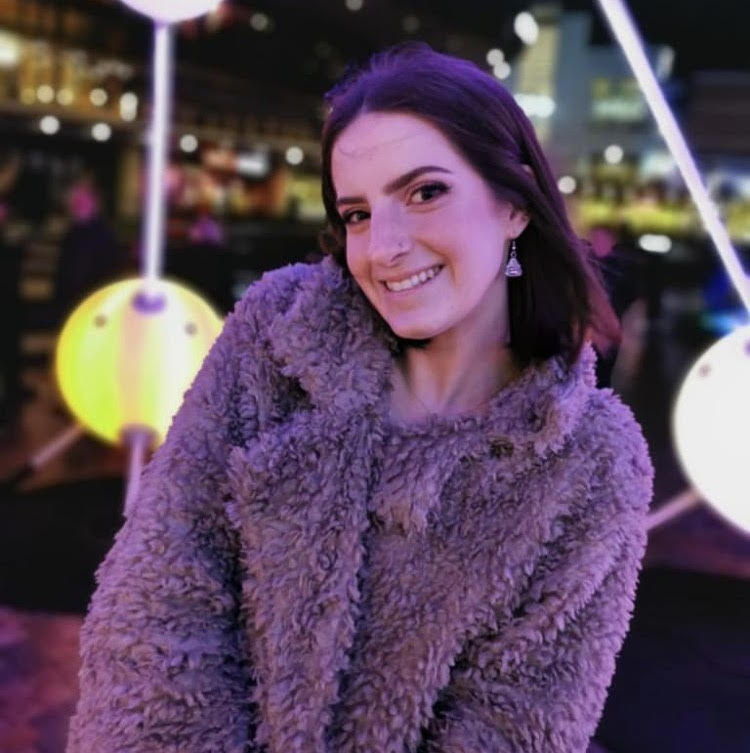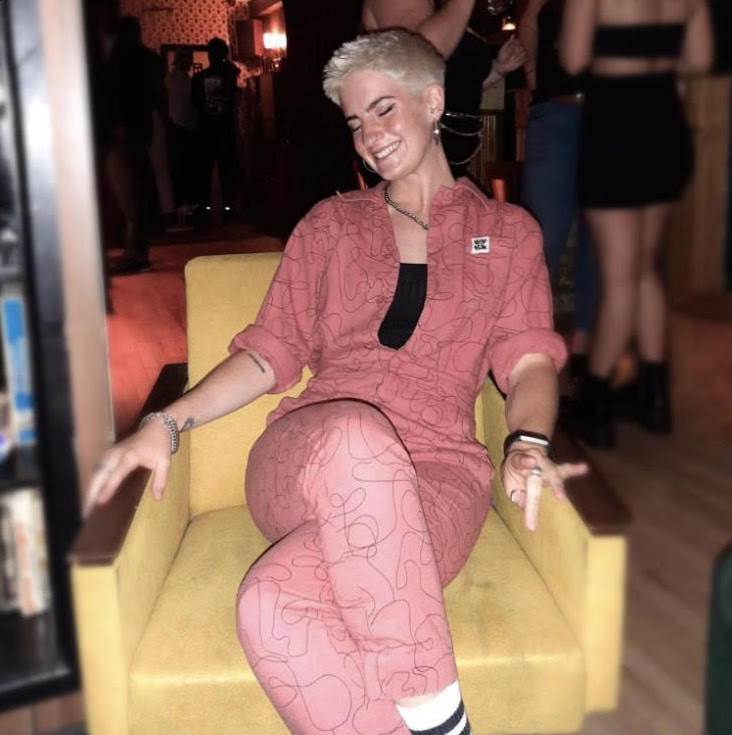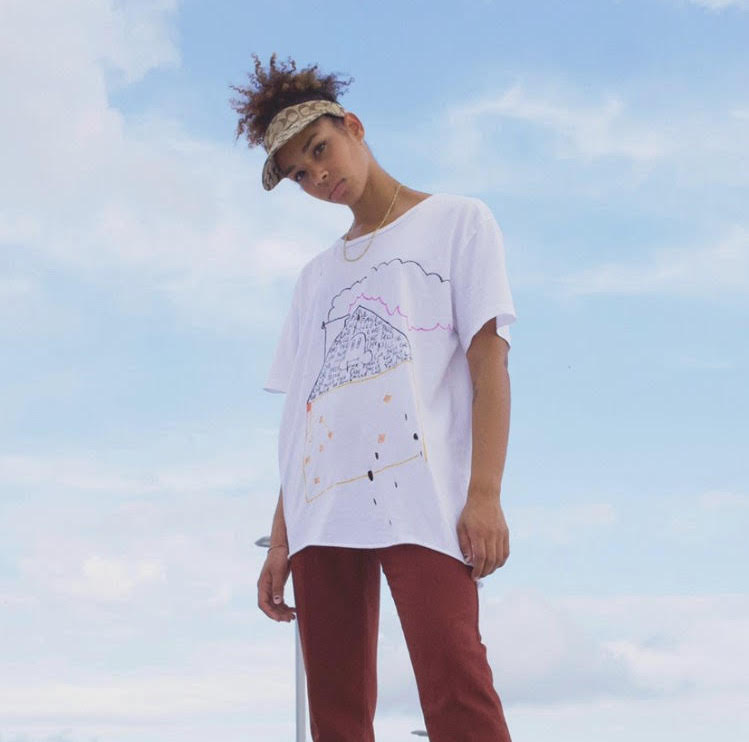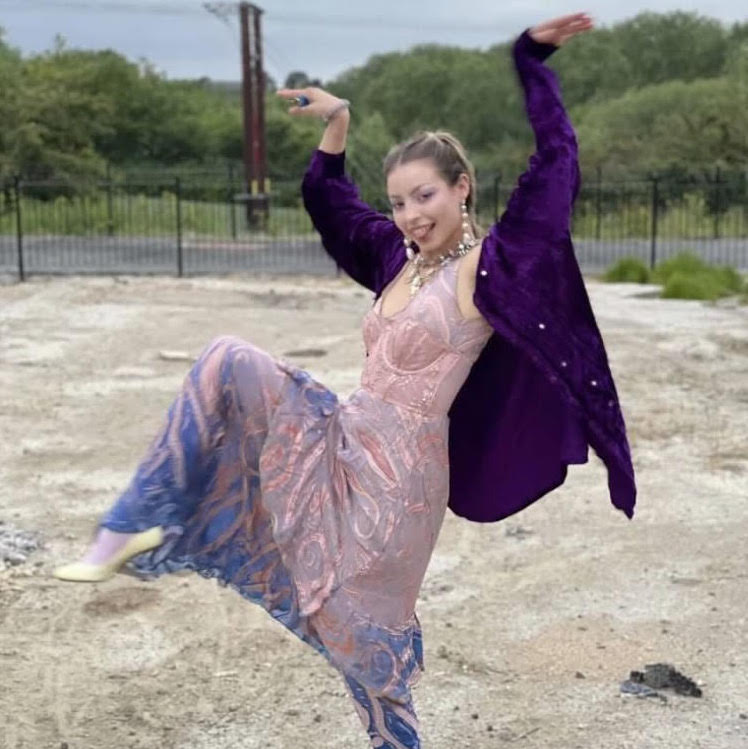It is common knowledge that our fashion sense changes and evolves along with us- I’m not the same girl I was when I was 14 and the lack of ‘Team Edward’ shirts I wear reflects that (I am still team Edward though). The clothes we wear can help us build our identity and is a crucial tool for transitioning and affirming new identities. However I didn’t understand just how important my clothes were until I discovered the full spectrum of my sexuality. Once I realised I was attracted to women also, there was a shift in my mindset- dressing for male validation and dressing for female validation were two completely different experiences. When I was dressing for what I thought made me most appealing to men, I found myself reaching for tighter fitting clothing, things that would restrict my body in the hopes it would also restrict my big personality that I usually muted for men.
Tighter clothes= smaller me= less space that I was taking.

Loose woman
The tendency for women to monitor, control and restrict their own bodies was explored by Bartky, where he states that a woman’s space is not a field in which her bodily intentionality can be freely realised. The term ‘loose woman’ indicates not only a woman with loose morals, but literally in the free and easy way she moves. Fashion has been a tool at both restricting women but also aiding their autonomy, this is evident in the way corsetry in the 1800’s evolved to allow women not only physical freedom, but when the ‘bicycle corset’ was invented, it also allowed them geographical freedom.
When I started dressing for women, I realised I was actually dressing for myself- because there were no expectations of how I should look. When those expectations were stripped, I discovered what outfits I liked myself in, instead of what outfits I liked to be liked in. Sometimes that looked like form fitting clothes, but it also meant a lot of baggy trousers and generally more comfortable materials and fits. I used fashion to compliment my transitioning mindset that was stepping away from the male gaze. I found this was a similar experience to the character Jules in the ever-loved ‘Euphoria’ series, where she explains she had built her entire identity based on a version of femininity desired by men- but she realises she is no longer interested in that version of herself.

Gender Performance
Furthermore, If you consider how intrinsically linked sexuality is to gender expression, turning to Judith Butler’s theory of Performity can help us understand how clothing is such an instrumental tool in conveying our identities. This theory puts into question how natural gendered behaviours really are, arguing that gender is in fact just a performance imposed upon us by normative heterosexuality- fashion being a key prop to this performance.
Therefore, by breaking away from these ideologies and dressing in ways that feel authentic to yourself, fashion can be an extremely helpful tool in reaching full self-actualisation. Self discrepancy theory explains how detrimental it can be for there to be a discrepancy between who you are and how you dress, resulting in a lack of pride and lower self esteem. So moral of the story: Dress how you feel inside and you’ll be happier for it! Queerness looks like so many different things, but what it isn’t is how you think you should look, but rather what you feel.
As London Pride erupted around the city, I spoke to some fellow queer people and asked them how they felt fashion aided them along their journey of queerness:
Priya


How do you think fashion/clothes helped you accept your queer identity?
Throughout a lot of my teens and early twenties I felt a huge pressure to perform femininity with my appearance. I felt that a lot of my value as a person was measured by how attractive I was to men, and this felt suffocating. I started to embrace my queerness and to learn more about feminism, so changing the way I dressed was a way for me to reflect that internal shift. People have often commented on my style and told me that men won’t like it- so going against that has enabled me to reclaim my body and queer identity.
Did you see a difference in the way you dressed once you did accept your queer identity?
The way I expressed myself with fashion has changed a lot since accepting my queer identity. I feel so much more freedom in what I wear now and choosing not to care what others think has been the most important change for me. Incorporating typically ‘feminine’ aspects into my style now feels like a fun option, rather than a necessity. Some days I choose to dress in a more stereotypically masculine way and I get some confused stares in the ladies’ toilet, but ultimately I feel more like myself.
Asia


How do you think fashion/clothes helped you accept your queer identity?
Once I came to terms with my sexuality, I stopped wearing things that made me feel uncomfortable such as dresses or heels. I never liked them but wore them because I felt I had to, because I thought that version of me was the only one people were going to accept.
Did you see a difference in the way you dressed once you did accept your queer identity?
I definitely did, I felt more comfortable and confident, and started caring a lot less about how people perceived me. I also feel like how I dress now helps me express myself and my personality more.
Mila


How do you think fashion/clothes helped you accept your queer identity?
Clothing has granted me a way to play at queerness, the bounds I felt were loosened as the fit of my clothes loosened too. Each of my outfits perpetuate self acceptance because fashion speaks on our behalf.
Did you see a difference in the way you dressed once you did accept your queer identity?
I used to be embarrassed to exist at all, especially with the unreturnable gift of queerness. My fashion used to be as plain as possible, desires suppressed, to reflect this toxic mindset I had rationalised. These tight anxieties were undone when I learnt the joy of practising excess through fashion: Layering extra necklaces, mixing colours, prints etc. Suddenly I was dressed to take up space, but so had to confront the horror of being perceived- but at least clothing had become fun.